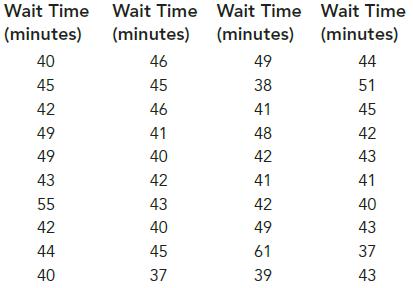There is a severe shortage of critical care doctors and nurses to provide intensive-care services in hospitals.
Question:
There is a severe shortage of critical care doctors and nurses to provide intensive-care services in hospitals. To offset this shortage, many hospitals, such as Emory Hospital in Atlanta, are using electronic intensive-care units (eICUs) to help provide this care to patients (Emory University News Center). eICUs use electronic monitoring tools and twoway communication through video and audio so that a centralized staff of specially trained doctors and nurses—who can be located as far away as Australia—can provide critical care services to patients located in remote hospitals without fully staffed ICUs. One of the most important metrics tracked by these eICUs is the time that a patient must wait for the first video interaction between the patient and the eICU staff. Consider the following sample of 40 patient waiting times until their first video interaction with the eICU staff.

a. Compute the mean waiting time for these 40 patients.
b. Compare the mean waiting time.
c. Compute the mode.
d. Compute the first and third quartiles.
Step by Step Answer:

Statistics For Business & Economics
ISBN: 9781337901062
14th Edition
Authors: David R. Anderson, Dennis J. Sweeney, Thomas A. Williams, Jeffrey D. Camm, James J. Cochran





